There's often too much code in a system to test it all as a first step. But most of that code already works.
I'd start with methods that were modified recently. Presumably most of the rest of the software works to some degree, and testing that won't likely find as many errors as will be found in new or newly revised code.
Should you run out of work (I doubt it in the near future if you have 1 or more developers actively working near you), you can move up to methods that use the methods that were modified, to methods that have high complexity according to software metrics, and to methods that are critical for safe system operation (login with password, storage of customer charge data, etc.)
One way to help decide what to consider testing next is to use a test coverage tool. Normally one uses this to determine how well tested the software is, but if you don't have many tests you already know with it will tell you: your code isn't very well tested :-{ So there's no point in running it early in your test construction process. (As you get more tests you and your managers will eventually want to know this). However, test coverage tools also tend to provide complete lists of code that has been exercised or not as part of your tests, and that provides a clue as to what you should test node: code that has not been exercised.
Our SD PHP Test Coverage tool works with PHP and will provide this information, both through and interactive viewer and as a generated report. It will tell you which methods, classes, files, and subystems (by directory hierarchy) have been tested and to what degree. If the file named "login.php" hasn't been tested, you'll be able to easily see that. And that explicit view makes it much easier to intelligently decide what to test next, than simply guessing based on what you might know about the code.

